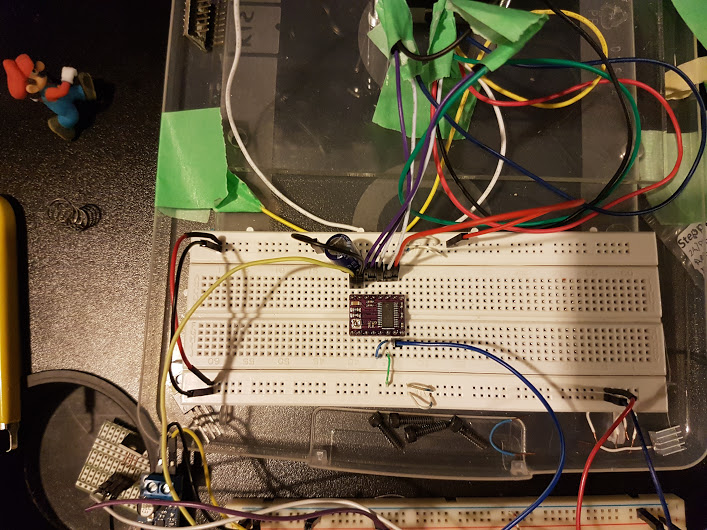I used to have a functional stepper motor setup for quite a whilte, but something went wrong when I was poking around and parts got hot and it failed to step. I tried replacing everything. It no longer gets hot, but it fails to step.
The driver is DRV8825:
And Ive also tested 2 different stepper motors.
Latest being similar to:
Ive checked my wiring a dozen times, but the motor locks in position (and hisses / buzzes), on power up but never steps.
Ive checked the step input with a scope, and is a solid square wave, very slowly ramping up.
The inputs to the DRV8825 are:
n.c (nEnable) ---------------- (vmot) +24V (220uF / 50V cap connected to gnd)
GND (m0) ----------------- (gnd) GND
GND (m1) ----------------- (B2) motor green
GND (m2) ----------------- (B1) motor black
+5 (nReset) ----------------- (A1) motor red
+5 (nSleep) ----------------- (A2) motor blue
(pulse) (step) ----------------- (fault) n.c
+5 (dir) ----------------- (gnd) GND (motor + logic gnds tied together)
The strange thing is the pot-voltage is 1.04V and the current winding (with step input tied) is 1.04A, shouldn’t one be double the other?
I am measuring the voltage right on the pot (was told this was identical to VREF via).
Though measuring at the via itself (the only circle I find), reports 24V.
That seems very wrong.
Any hints appreciated, its driving me nuts!
Thanks,
Rob.

